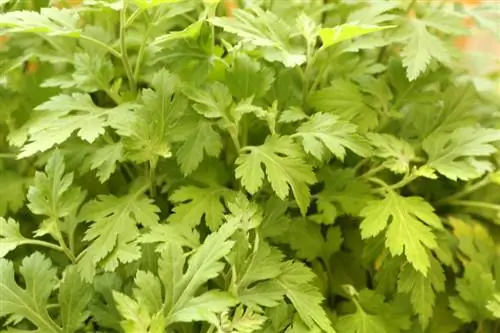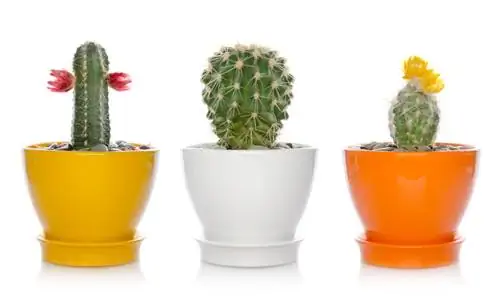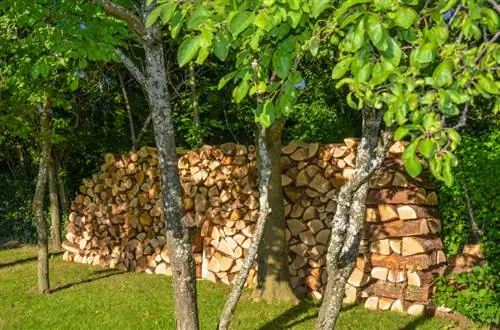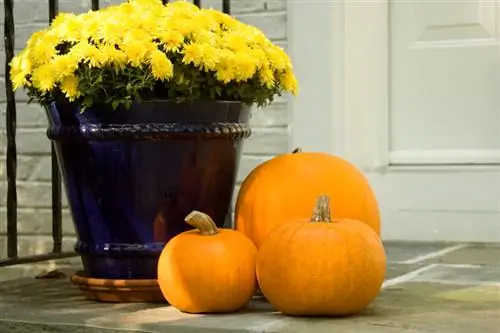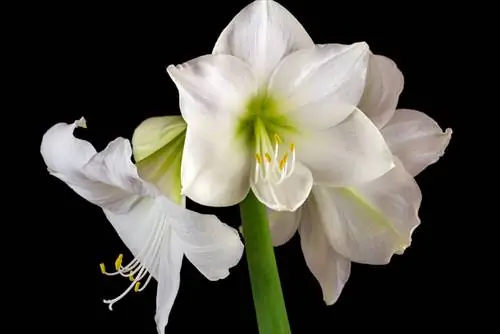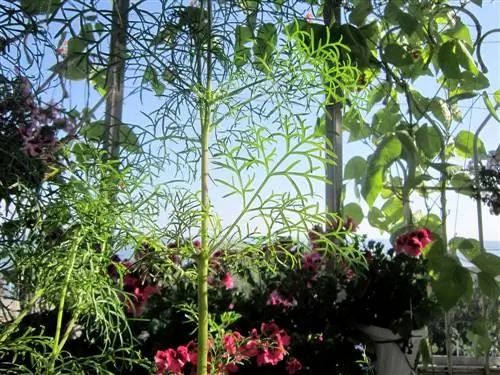- Author admin [email protected].
- Public 2023-12-16 16:46.
- Last modified 2025-01-23 11:20.
Hardly anyone who loves gardening can resist chrysanthemums that bloom lushly in bright colors, especially since the perennials can often be purchased very cheaply. But once the plants have finished flowering and are overwintered, they often no longer appear in the same splendor. At this point we will explain some possible reasons and how you can get your chrysanthemums to bloom.
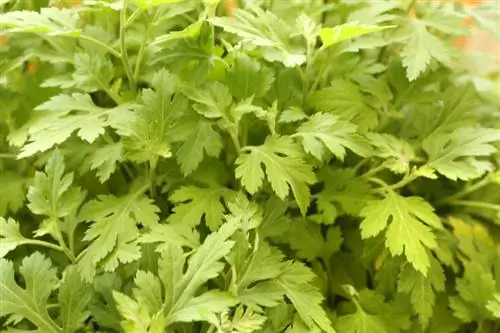
Why aren't my chrysanthemums blooming?
Chrysanthemums may not bloom due to nutrient deficiency, improper watering, unsuitable location, or a later natural bloom time. Fertilization, correct watering and a suitable location can support and promote flowering.
Chrysanthemums are heavy feeders
First of all: Chrysanthemums are heavy feeders and need to be fertilized regularly, especially if they are grown in pots. Planted garden chrysanthemums are therefore best planted in nutrient-rich, dark soil. They thrive best with regular doses of mature compost. Potted chrysanthemums, on the other hand, need more attention and should be supplied with a liquid fertilizer about every two weeks.
Flower buds dry up and fall off
You should be particularly careful if the plant develops flower buds, but they dry out and fall off before they bloom. Due to a lack of nutrients, the chrysanthemum is not able to actually complete the energy-sapping flowering process and therefore prefers to shed its buds. As an immediate measure, fertilize the plant with a liquid fertilizer (€15.00 on Amazon), for example for flowering plants, because its active ingredients are immediately available to it.
Don’t forget to water
Incorrect watering can also limit the chrysanthemum flowering. The plants need a lot of water and must not dry out under any circumstances - but at the same time, waterlogging must be avoided at all costs. Therefore, water your chrysanthemums generously, but at the same time ensure good drainage. Excess irrigation water must be able to drain off quickly and easily so that the plant is not left wet.
Wrong location
Last but not least, the lack of flowering can simply be explained by the wrong location. The chrysanthemums are too dark or too light orin the wrong ground. The plants prefer a loose, moist and humus-rich soil as well as a bright, but by no means full sun location. In particular, the intense midday sun is often not tolerated by the sensitive chrysanthemums.
Tips & Tricks
Sometimes the flowering just takes a while: If the chrysanthemum that seems unwilling to bloom has not yet shown any buds in August, just wait and see. Even if the gardener saw the plant bloom early last year, it is more likely that its natural flowering period will not begin until September or even October. Early flowering chrysanthemums were often treated by the gardener (e.g. with special lighting) and thus made to bloom earlier.

